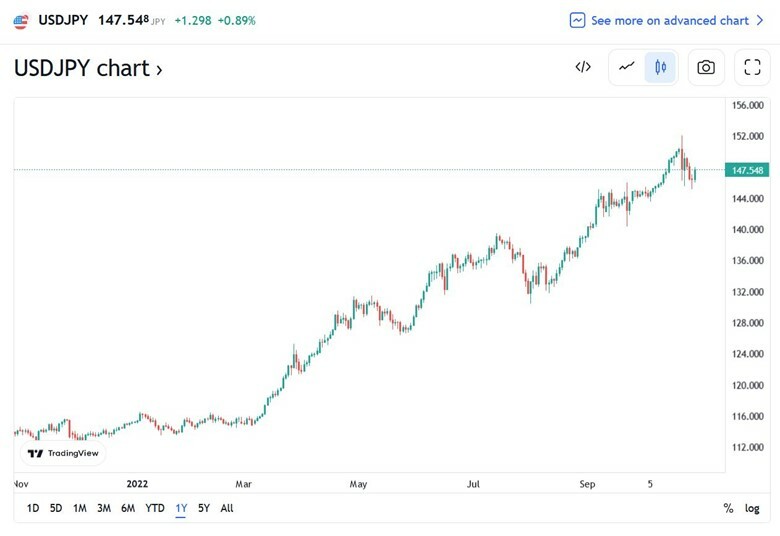A Guide to Trading The USDJPY

Lorem Ipsum
Trading in the forex markets is one of the less challenging ways to get into the trading industry. The learning curve is not that steep, and the returns can be well worth the effort. Furthermore, many traders have found some great currency pairs over the decades, but none so endeared like USD/JPY pair.
The US dollar and the Japanese yen are the world's number one and fourth most significant reserve currencies consecutively and represent some of the largest economies globally. Their high volatility, liquidity, and low bid-ask spread present forex traders with many chances to make tight spreads, increasing the pair's popularity. This piece will examine factors influencing the USD/JPY currencies and how to read their price chart.
What Major factors influence the USD/JPY?
The USD/JPY pair is susceptible to influences from factors affecting the global market, as well as others in their economies. When investors pick one over the other as a safer bet or better haven, it rises against the other, which keeps changing as market conditions and other economic factors vary. However, this section will examine factors that influence each internally.
The USD
1. Interest rates
The Federal Reserve is responsible for setting the interest rates in the US depending on the county's fiscal objectives. Raising interest rates makes it challenging for American traders to access credit, which lowers their purchasing powers and leveraging ability against their Japanese counterparts.
2. Treasury bond prices
The US government sells and pays bonds to contract or expand the dollar supply in the market. If their prices go down, it lifts the dollar, helping strengthen the USD/JPY prices.
3. The supply and demand of the US dollar
When the supply of the US dollar is high, the market can get over-saturated and reduce its demand in favor of the yen.
4. Market sentiment and public psychology
Market sentiment has to do with how investors and the public view and feel about the current state of the dollar. Are they fearful or hopeful about the future? If the general feeling or belief is that the dollar is over-leveraged, they will prefer the Japanese yen and vice versa.
The JPY
1. Imports and Exports
Japan is a significant manufacturer in the world's economy. Its levels of imports and exports affect how well the yen is doing.
2. Natural Disasters
The country is also prone to earthquakes and tsunamis, which can reduce its productivity for extended periods.
3. Government Debt
Japan is heavily leveraged, and maintaining a good balance between its debt obligations and borrowing is a significant factor influencing the yen's performance.
Reading a USD/JPY Price Chart
A price chart shows the economic health of a currency or, in our case, a pair. In each currency pair, there are two factors to note. The first currency in a pair is the base currency, while the second is the quote currency, which also determines the currency used to buy the other.

In a USD/JPY pair, their value is quoted in Japanese yen. For instance, if today one dollar is equivalent to 150 yen, the pair is trading at 150 yen, also known as the exchange rate. Furthermore, a price chart has green and red candle sticks representing the trading pairs' bullish and bearish market movements.
The overall direction of their oscillation is essential when reading a USD/JPY price chart. If it rises and dips staircase upwards, the base pair, the dollar, is stronger than the yen. If it is staircasing downwards, it is weaker than the quoted currency, the yen. Buy when the flow is moving upwards and sell when moving down.
Tips for trading the USD/JPY using Fundamental Analysis
USD/JPY can be dormant for extended periods
The dollar-yen pair tends to experience periods of inactivity only to move significantly. So when the market is dormant, keep alert for when it moves.
The USD/JPY Yield Correlation
The pair strongly correlates with the ten-year US treasury yields. For the most part, the ten-year treasury yield and the dollar-yen trading charts are near mirror images of each other. So looking at this chart will also give better insight into the pair.
Tips for trading the USD/JPY using Technical Analysis
The USD/JPY DOW correlation
Historical data shows that the USD/JPY pair tends to weaken when stocks sell off and do well when stocks sour.
Time Trades
Even though the forex market is open 24/7, five days a week, that is not to say that it is a good idea to trade at any time. Wait for the instances when the American and Japanese markets are open for the highest volatility and tightest spreads.
Conclusion
The forex market can be a bit challenging when starting, but in no way is it impossible to learn how it works. Furthermore, learning how the dynamic between currency pairs works and what affects their price movement is an essential part of that process. The USD/JPY pair is a trader's favorite and a haven every beginner trader will benefit from exploring its potential. We hope this piece sheds light on the subject and sets you well on your way to trading the pair.
More Trading Guides:


